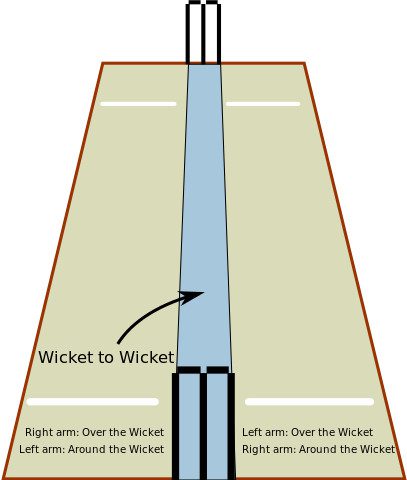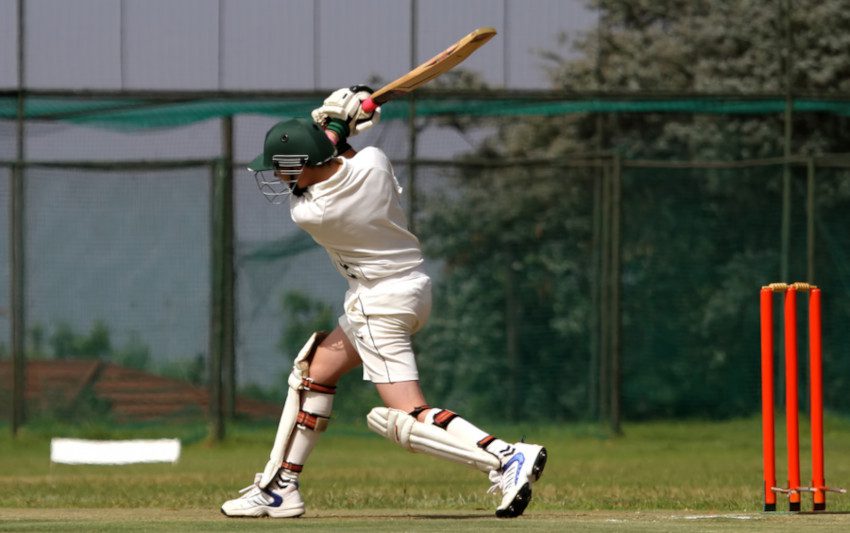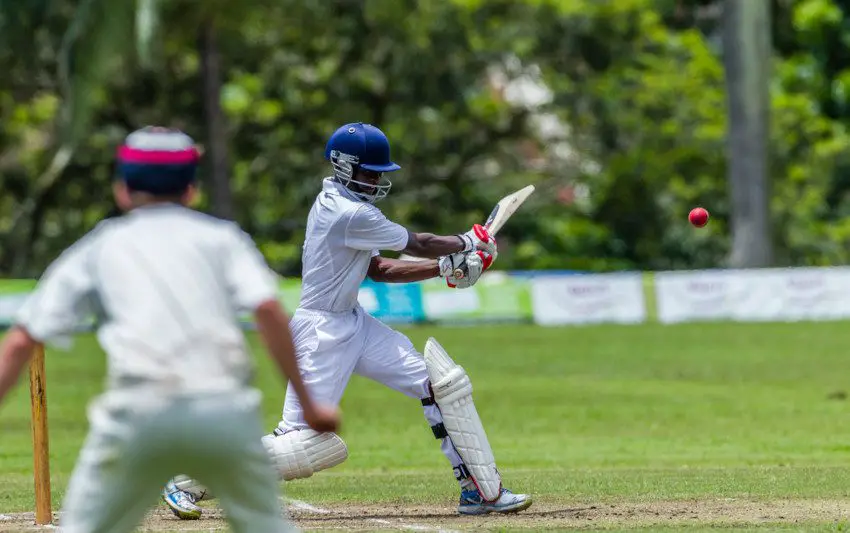Table of Contents
These are important points for bowlers to consider so let’s take a look at around the wicket and over the wicket.
What is Over the Wicket?
Over the wicket is a line that the bowler uses when they release the ball. If a right handed bowler is bowling over the wicket, they will be on the left hand side of the umpire when they let go of the ball.
When a left arm bowler delivers over the wicket, they will be on the umpire’s right side.
What is Around the Wicket?
Around the wicket is a line of attack used by a bowler in cricket. A right arm around the wicket bowler will be on the right hand side of the umpire when the ball is released.
A left arm around the wicket bowler will be on the umpire’s left hand side.
Difference Between Over the Wicket and Around the Wicket
As a bowler runs in to deliver the ball, there are two sides of the stumps. They can either bowl on the left side of the umpire or on the right.
A right handed bowler delivering to the umpire’s left is bowling ‘over the wicket’. If they switch to the right hand side, they are bowling ‘around the wicket’.
For a left arm bowler those positions are reversed. If they bowl to the umpire’s right, they are bowling ‘over the wicket’. If they change to the left side, this is an ‘around the wicket’ line of attack.
Both right and left handed bowlers will tend to deliver over the wicket but why is this the case?

When do Bowlers Prefer Bowling Over the Wicket?
Over the wicket is the more natural way for a bowler to deliver the ball. With this approach they are running in a straight line, while an around the wicket method means they need to run in a curve. The vast majority of bowlers in cricket will bowl over the wicket.
The choice can come down to personal preference but there can be advantages with an over the wicket approach. If a right handed bowler is delivering the ball to a right handed batter, they are bringing the LBW dismissal into play.
If that right handed bowler were to switch to around the wicket, the natural angle suggests that the ball is more likely to pitch outside of the leg stump. Remember that the LBW law states that a batter cannot be given out if the ball pitches outside the leg stump.
The natural angle from over the wicket will also tend to make the batter play at the ball. When bowling from round the wicket, if the angle is taking the ball towards first slip, the batters may feel that they can just leave the ball alone.
Some bowlers have said that they find it easier to maintain an off stump line when they are bowling from over the wicket.
Bowling from over the wicket may also help the wicket keeper. They will have a full view of the ball without it being impeded by the batter on its way through.
Reasons to Bowl Around The Wicket
There are occasions when a bowler will prefer to come around the wicket and a lot of these come down to the old right hand / left hand issue. A right arm bowler delivering the ball to a left hander may want to switch to round the wicket.
This would bring back all of the advantages that I mentioned above. The LBW law comes more into play and you can attack that channel outside off stump. The batter may be more conscious that they need to play at the ball rather than leaving it alone.
This can be a similar situation for left arm bowlers. If their natural angle is an issue when they are bowling to certain batters, they may find it preferable to switch.
Round the wicket bowling can sometimes be used in a negative context. It may be harder for the batters to score runs from this type of angle.
Round the wicket could also be used if there is more rough on the area of the pitch where the ball is most likely to land. This makes the approach a more attacking one.
When Should You Change?
As bowlers develop, they will begin to understand their game. When this happens, they will naturally know when to change from over the wicket to around and vice versa. If you’re new to cricket and just learning, this can be a difficult question to answer, so what should you do?
It’s certainly worth trying a different line of attack when a left handed batsman comes to the crease. I think it’s more encouraging when you’re running in and you can see all three stumps. For a right arm bowler delivering to a left handed batter, they will cover those three stumps and you may not see any of them.
You may also want to switch over if nothing is happening with the ball. If there is no swing or seam movement and the batters are building a big partnership, it’s always worth trying something different. Give the batsman something else to think about by using a different bowling line.
As you gain more experience, you will get a feeling about switching your line. As a final note, remember to practice both lines of attack during net sessions, in order to build your confidence.
Conclusion
I’ve always bowled right arm over. I’ve never really thought about it much but this angle does seem more natural. When I have switched to round the wicket, it’s only because there is a left handed batsman.
I find that it helps to actually see the stumps when I’m bowling and I can’t do this from over the wicket to a left hander.
Maybe you’ve also found your preferences in this way. If not, there’s lots of advice here that can help you choose your best angle of attack as a bowler.


